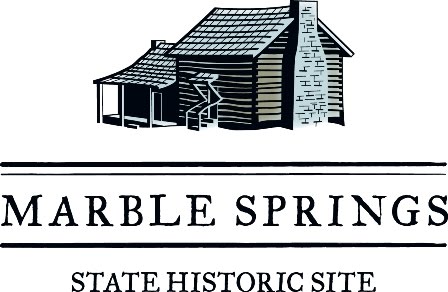We are gearing up for our busy fall season here at Marble Springs State Historic Site!
Join us at the East Tennessee History Fair in downtown Knoxville on August 16. We will be there with the other Historic Homes of Knoxville.
On August 23, we will be hosting a Soap Making Workshop (10am-2pm).
On September 20 (10am-5pm) and September 21 (12pm-5pm), we will host our annual John Sevier Days. Join us for period demonstrations, militia drills, historic lectures, and more.
On September 20, come back to our site for our 2nd annual Sevier Soiree in the evening. This fundraising event will involve food, music, and a silent auction.
Details are subject to change. We will keep you posted about other fall events soon!
All money raised at these events benefits educational programming at Marble Springs. Programming assistance for these events is provided by
the Arts & Heritage Fund and Knox County. Marble Springs is funded under an
agreement with the Tennessee Department of Environment and Conservation,
Tennessee Historical Commission, and supplemented by additional funds raised by
the Governor John Sevier Memorial Association.
Wednesday, July 30, 2014
Wednesday, July 9, 2014
Sevier Family Coat of Arms
This post was written by our summer intern, Kristin Brig. Thanks, Kristin!
In the medieval era, the coat of arms
developed as a way for families to distinguish themselves and to broadcast ties
to nobility or as well-to-do. All sorts of colors and shapes went into making a
coat of arms, each with a specific task in mind. Even the background of the
coat of arms meant something important.
On the Sevier family crest, two colors make
up the background: gold and red. Gold indicates generosity and lifting one’s
mind to higher thoughts than oneself. Red, on the other hand, demonstrates a
belonging to a warrior class and to the military. Sometimes it means martyr.
Although no thick cross sits on the shield,
the crest clearly divides into four areas. Such division therefore indicates a
will toward faith and protection. In each of the four areas, there are symbols:
two areas carry three boxes each in the same pattern, while the other two areas
carry the same man’s head.
There are no indications of rectangular
boxes carrying any significance on family crests, yet there is a symbol called
the carpenter’s square that exists on certain crests. This square represents
the family’s loyalty to the law of righteous and equity in society, which would
further confirm the faith and protection division of the crest.
The most common question visitors give us
when it comes to the crest, however, is why the human head with a turban is on
there. According to family crest symbolism, this symbol points to prowess
during the Crusades, actually naming the symbol the head of a Moor (a Spanish
name for Muslim in the medieval era).
As for the writing at the bottom of the
crest, “pro patria,” the phrase is Latin for “for country.” A flexible phrase
for a flexible, ever-moving and ever-changing family.
If we read the Sevier family coat of arms
via the meanings of these symbols, we discover something new about Sevier’s
ancestors. Clearly the Seviers fought in the Crusades during the medieval era,
due to the colors and Moor’s head chosen. They held true to their faith as
well, even leaving their first homeland, France, in favor of a society in which
they could practice their Huguenot faith. They believed in equality of persons,
faith to their God and country, and even a warrior spirit in times of trouble. Each
of these qualities showed in John Sevier during his life here in Tennessee, and
his descendants still pass on these centuries-old qualities that we can find
today in a simple coat of arms hanging in a corner of an old cabin.
Subscribe to:
Posts (Atom)
